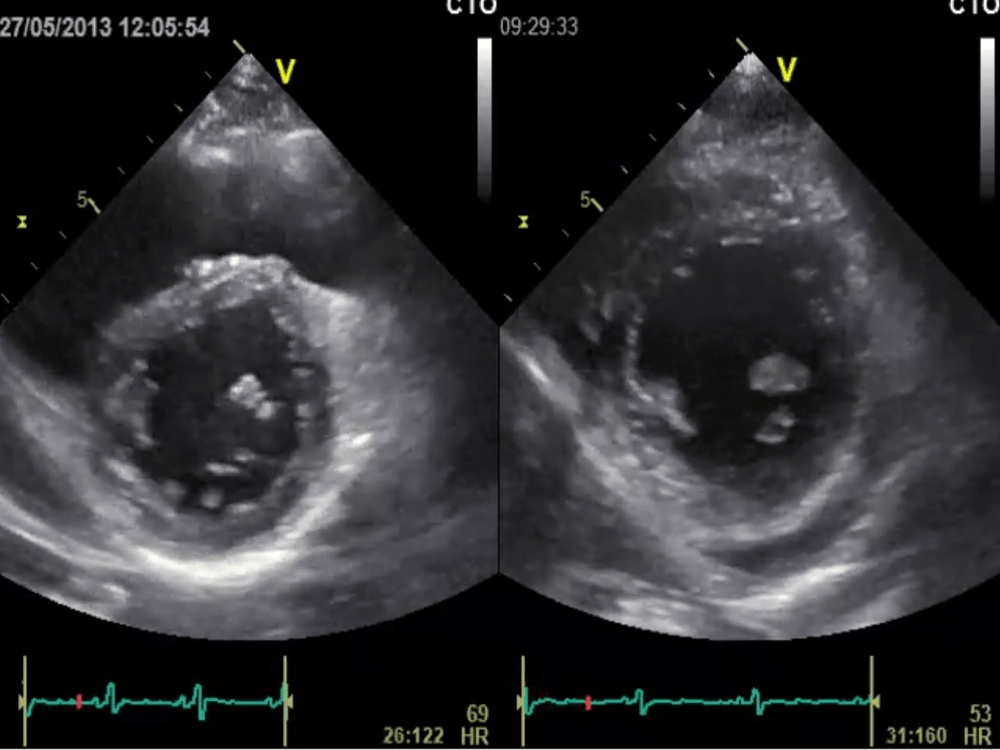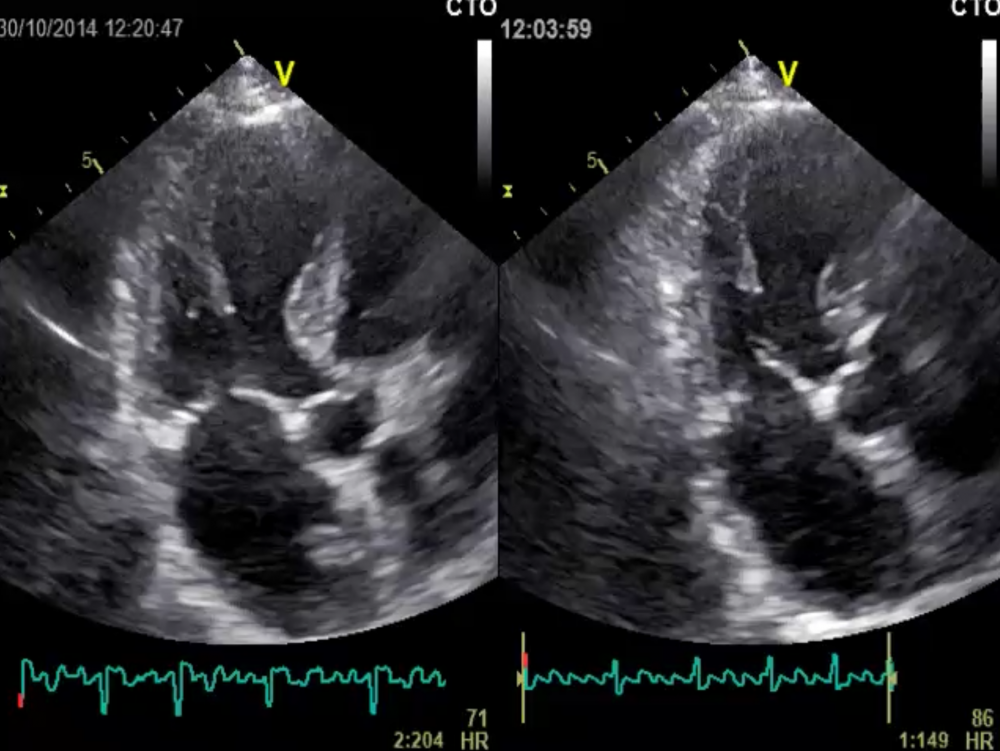Christmas Ultrasound Miracles – Part 2

The most common reason for choosing medicine as a profession is by far the ability to help patients. We all know the rewarding feeling we get when patients are in a critical state but things do turn out well in the end. With ultrasound, we are often the witness of such events. Take a look at more Christmas Miracles that I collected over the years.
Normalization of left ventricular function in Takotsubo syndrome
This 67-year-old woman came to the hospital, not as a patient but to visit her sister who was suspected to have lung cancer. On her way out of the hospital, she experienced severe dyspnea and was brought into the ER. The echo showed apical ballooning and her coronaries were normal. A clear case of Takotsubo. After treatment with heart failure medication, her left ventricular function recovered completely! But the real miracle: The tumor found in the lungs of her sister turned out to be benign.
Left: typical Takotsubo syndrome with apical ballooning and hypercontractility of the basal segments. Right: After treatment left ventricular function reverted completely
Successful treatment of constrictive pericarditis
It took three years until the diagnosis of constrictive pericarditis was established in this young waiter complaining of dyspnea and a drop in exercise capacity. He saw several doctors of various specialties including a psychiatrist. Diagnosing constrictive pericarditis with echo is not so difficult. Take a look at the septal shift in the echo below. Pericardectomy solved his problem. He regained his trust in doctors and is now back in the gym.
Left: Septal shift (during inspiration) seen in the short axis view; Right Septal shift is “almost gone” after pericardectomy. Only a small pericardial effusion is seen behind the left ventricle.
I vividly remember each of these patients and their thankfulness.
Hanging on a thread
A 75-year-old patient was diagnosed with atrial fibrillation. When we were looking at the ECG we were not aware of how high his risk for a stroke was. The echo revealed a large highly mobile thrombus. We chose to admit the patient and initiate intravenous heparin. It took only 6 days to completely dissolve the thrombus without the patient having an embolic event. Another example that shows the power of ultrasound.
I am sure that you experienced similar miracles with ultrasound. If not then it is time to embark on a rewarding journey to learn this technique. It will definitely help you to “stand out” and help your patients.PS: If you missed out on the first part of Christmas Miracle cases: follow this link.
Best Thomas and the 123sonography team



